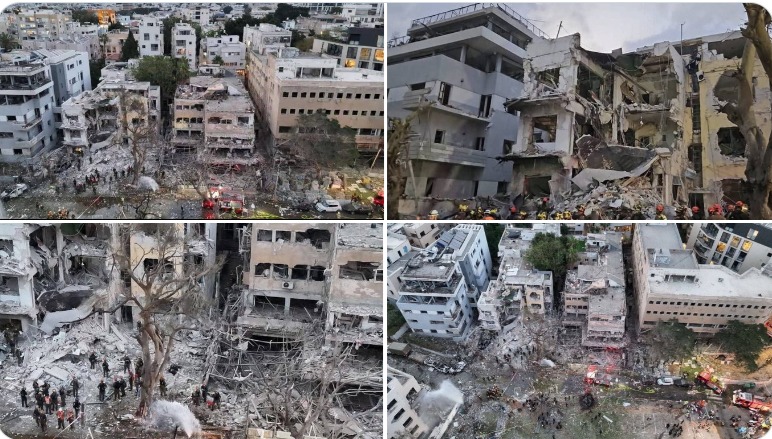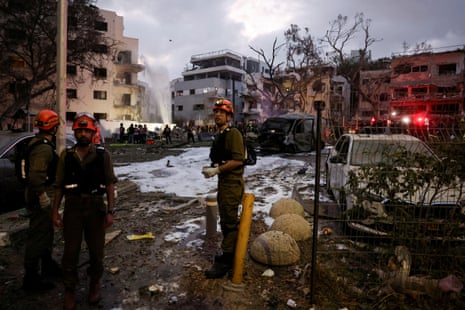HT9. 15 minutes ago: lsraeI under attack… See more
In late September, as the anniversary of Hamas’s October 7 attacks approached and Gaza lay in ruins, Israeli Prime Minister Benjamin Netanyahu announced a new strategic priority: targeting Hezbollah in southern Lebanon. Despite a brutal campaign that decimated the group’s leadership and displaced over 1.2 million civilians, Hezbollah remains a formidable opponent — recently even launching a drone strike that hit Netanyahu’s own home.
This article explores how Hezbollah has survived, adapted, and continues to retaliate despite overwhelming Israeli firepower.
1. Israel’s Multi-Front Offensive Against Hezbollah

Killing Top Commanders
In late September, Israeli forces began a sustained bombing campaign. Among the high-profile Hezbollah figures killed were:
- Hassan Nasrallah (Secretary-General)
- Hashem Safieddine (Deputy Leader)
- Nabil Qaouk, Ibrahim Aqil, and Ali Karaki (Senior Military Commanders)
These strikes targeted Hezbollah facilities in Dahiyeh, Beqaa Valley, and even central Beirut, including drone workshops and financial hubs.
The Psychological Blitz
Israel also reportedly triggered thousands of booby-trapped communications devices (pagers, walkie-talkies), killing militants and civilians alike. The intent: decapitate Hezbollah’s centralized command.
2. Hezbollah’s Resilient Structure and Strategy

Despite these catastrophic hits, Hezbollah remains operational. Why?
Autonomous Units
Hezbollah’s military strategy is rooted in decentralization. Small, highly trained units operate independently, empowered to make tactical decisions on their own. This mission-command style approach has allowed the group to maintain functionality even after its leadership was destroyed.
High Mobility and Dispersal
Hezbollah relies on tactics developed in previous conflicts, such as:
- Underground tunnels and shelters
- Mobile rocket platforms
- Mountain bikes for low-profile transport
- Fast setup/disperse times (under 30 seconds for a rocket launch)
3. Continued Retaliation Against Israel

Netanyahu’s Home Hit
A drone launched by Hezbollah struck Prime Minister Netanyahu’s holiday residence in Caesarea. Though Netanyahu wasn’t present, the attack showed the group’s ability to reach deep into Israel.
Daily Barrages Continue
Hezbollah has continued its barrage of:
- Unguided rockets targeting border towns
- Precision missile strikes, including one near a military factory outside Tel Aviv
- Explosive drones, sometimes bypassing Israel’s Iron Dome
Dozens of Israeli soldiers have been injured, and infrastructure damaged.
4. Israeli Ground Invasion Stalls

Despite weeks of heavy assault and ground incursions, Israel has failed to capture and hold even a single village in southern Lebanon.
Israeli forces often seize areas briefly, only to retreat under sustained guerrilla fire. Hezbollah’s intimate knowledge of Lebanon’s rugged terrain—its wadis, hills, and valleys—gives it the home-field advantage.
5. Human Cost and Civilian Displacement

Lebanese Casualties
- Over 1.2 million Lebanese have been displaced
- Nearly 500,000 children have been forced from their homes
- Civilian casualties number in the hundreds, though exact figures vary
Israeli Casualties
- Dozens dead, hundreds injured from Hezbollah rocket and drone strikes
- Major property and infrastructure damage, including in Haifa, Tel Aviv, and Petah Tikva
6. Why Hezbollah Survives

According to defense analysts, Hezbollah doesn’t need to win—it just needs to deny Israel peace.
This long-war strategy, refined through decades of asymmetric warfare, continues to frustrate Israeli military planners.
7. A War of Attrition
Fawaz Gerges, professor at the London School of Economics, says:
Conclusion
Despite a campaign that destroyed Hezbollah’s senior leadership and infrastructure, the group remains functional and dangerous. Its organizational resilience, asymmetric strategy, and grassroots military design have allowed it to survive what should have been a knockout blow.
The question now isn’t whether Israel can destroy Hezbollah — it’s whether it can achieve any long-term peace without a political and diplomatic resolution.